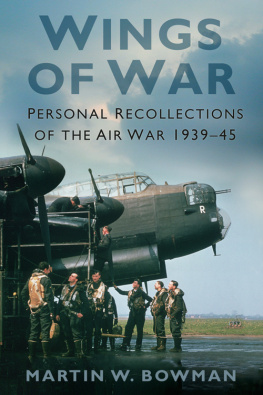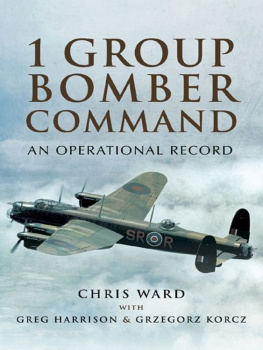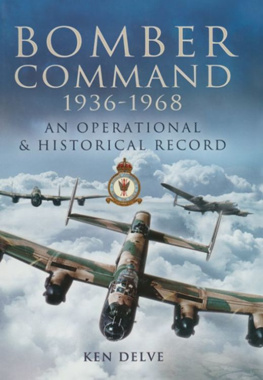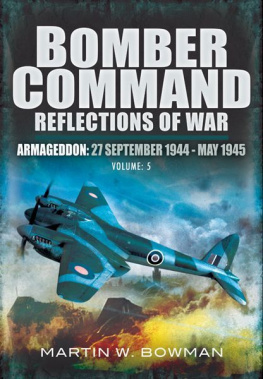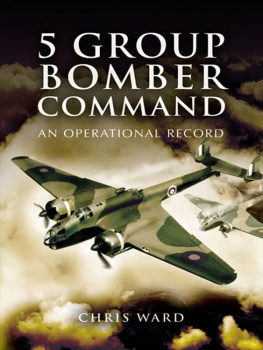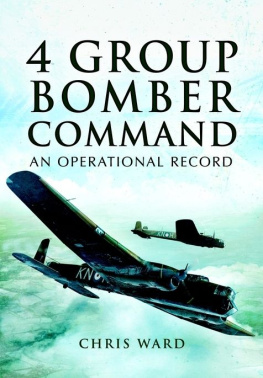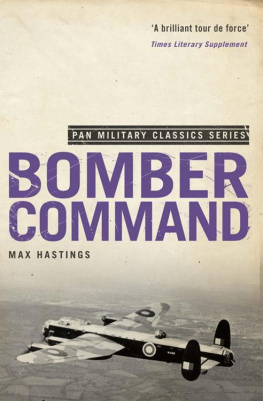
Pen & Sword
AVIATION
First published in Great Britain in 1985 by Viking
Reprinted in this format in 2014 by
PEN &SWORD AVIATION
An imprint of
Pen & Sword Books Ltd
47 Church Street
Barnsley, South Yorkshire
S70 2AS
Copyright Martin Middlebrook and The Estate of Chris Everitt, 1985, 2014
ISBN 978 1 78346 360 2
The right of Martin Middlebrook and Chris Everitt to be identified
as Authors of this work has been asserted by them in accordance
with the Copyright, Designs and Patents Act 1988.
A CIP catalogue record for this book is
available from the British Library
All rights reserved. No part of this book may be reproduced or
transmitted in any form or by any means, electronic or mechanical
including photocopying, recording or by any information storage and
retrieval system, without permission from the Publisher in writing.
Printed and bound in England
By CPI Group (UK) Ltd, Croydon, CR0 4YY
Pen & Sword Books Ltd incorporates the Imprints of Aviation, Atlas,
Family History, Fiction, Maritime, Military, Discovery, Politics, History,
Archaeology, Select, Wharncliffe Local History, Wharncliffe True Crime,
Military Classics, Wharncliffe Transport, Leo Cooper, The Praetorian Press,
Remember When, Seaforth Publishing and Frontline Publishing
For a complete list of Pen & Sword titles please contact
PEN & SWORD BOOKS LIMITED
47 Church Street, Barnsley, South Yorkshire, S70 2AS, England
E-mail: enquiries@pen-and-sword.co.uk
Website: www.pen-and-sword.co.uk
CONTENTS
It is difficult to grasp the sheer scale of Bomber Commands unique and prolonged campaign against Germany in the Second World War. The bomber squadrons flew from the very first day of the war to within a few hours of the end, more than five and a half years later: more than a third of a million sorties; nearly 9,000 bomber aircraft destroyed by enemy defences or lost to the hazards of the skies; more than 50,000 airmen killed, men from the United Kingdom and from every Empire and Allied country in the world, enough fatal casualties to form seventy battalions of infantry or the crews of thirty modem battleships and that was not counting the men taken prisoner of war, wounded or just worn out. It was a campaign which produced a scale of devastation in the cities and towns of Germany and of other European countries wildly beyond any pre-war conception of what a modem bomber force could achieve.
It is unlikely that the likes of that Second World War strategic bombing campaign will ever be seen again; the first atom bomb rendered such bomber fleets obsolete within months of the German surrender. It is not surprising that students of military history should have concentrated so intensely on this unique campaign. Book after book has appeared and still the interest does not seem to wane. And yet there has never been a published book which comprehensively covers the whole of Bomber Commands war in detailed reference form. THE BOMBER COMMAND WAR DIARIES attempts to fill this gap. Every single operation which Bomber Command mounted during the Second World War will somehow be listed, to produce an operational reference book of use and interest we hope to all students of the air war and particularly to those men who flew with Bomber Command and survived; these last and possibly the relatives of those who did not survive may be helped to see how the efforts of an individual member of Bomber Command fitted into the greater pattern of the war which could not be seen at the time.
We do not intend this work to be in any way similar to the formal, academic study of the R.A.F. strategic bomber offensive which formed the British Official History, published in 1961. Neither will it contain any personal views on that sensitive subject, the so-called area bombing campaign, to which such a large proportion of Bomber Commands efforts were devoted. References to bombing results will be confined to the inclusion of statistics for individual raids which have been obtained from Germany and the other countries where Bomber Commands targets were situated; these will be presented as fully as possible, whether they favour one side or other of the old argument about how worth while Bomber Commands operations were. We are determined to produce as accurate and reliable a reference work as possible and not to detract from any merit it might have by becoming involved in old arguments. The authors are mindful that a contribution to the bombing war was made by the R.A.F.s Advanced Air Striking Force in France in 1939 and 1940 and greater contributions were provided by the Middle East, Mediterranean and 2nd Tactical Air Forces later in the war; we are also aware of the huge effort of the United States Army Air Forces in the second half of the war; but this study must confine itself strictly to the activities of the units flying under the operational control of R.A.F. Bomber Command.
The units of Bomber Command were in a uniquely favourable position to produce a reliable documentary record of their operations. A far-sighted Air Ministry had ordered that standard forms the Air Force Forms 540 and 541 were to be completed for every operational flight by every single aircraft. The aircrafts serial number, its crew, its bomb load and its take-off time were all recorded; if the aircraft returned safely, its landing time and a rsum of the crews experiences during the flight were added. Squadrons made composite reports of the crews flights; groups then consolidated the squadron reports; Bomber Command Headquarters finally produced an overall report of every raid. Because all links in the chain were home-based, none of these documents was lost to enemy action as were so many documents which failed to survive the war. There are minor gaps and errors due to clerical lapses but these are negligible. It is unlikely that any wartime operations were documented so comprehensively as those of Bomber Command. The records were transferred to the Public Record Office in 1971 and have been freely available to researchers since then. Chris Everitt, the researching half of this partnership, has spent much of the last four years studying them.
But these British records should be used with some care. Distinction must be made between what was definitely known to have happened and what the crews believed happened on their flights. If a report says that 500 bombers of various types took off to attack a German city and that 450 of the crews claimed on returning that they had released 1,500 tons of bombs on that city, only the first part of the statement that 500 bombers had taken off can be deemed to be completely reliable. All attempts by Bomber Command to provide raid reports based solely on the evidence of returning crews were soon found to be of little value and it was eventually found that there were many occasions when bombs were not released on the designated targets. Furthermore, a significant proportion of the bombs did not even explode; the city records of Cologne, for instance, state that


